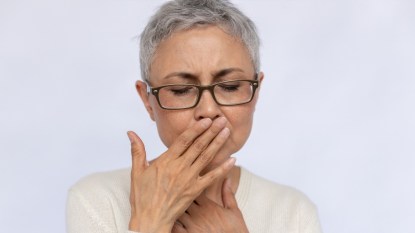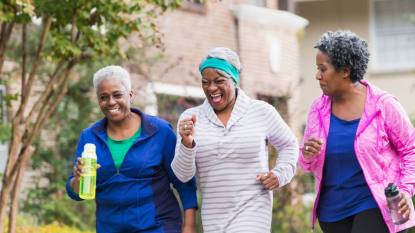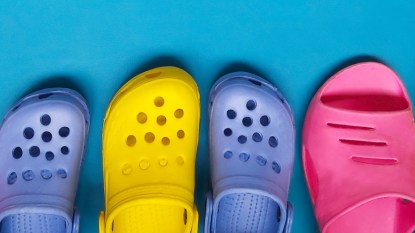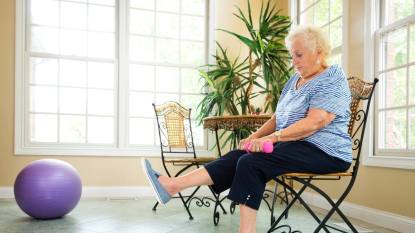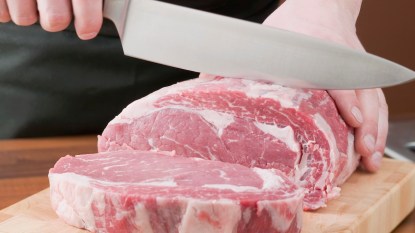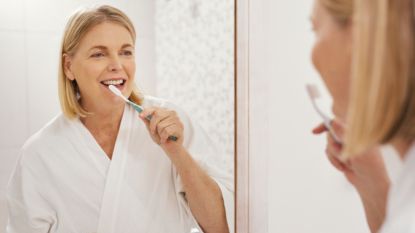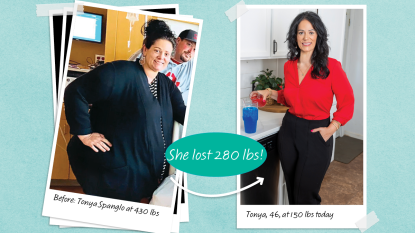How a Scalp Massage Can Support Your Health: Enhanced Hair Growth, Less Stress and More
Plus, two accessories that can make the treatment even more effective

If you’ve ever enjoyed the soothing sensation of a scalp massage, you’re familiar with its immediate relaxation benefits. But what you might not know is when done correctly, scalp massages can also support your health, including combating hair thinning and promoting hair growth! To learn more about the benefits of scalp massages, we consulted several massage therapists. Here, they share insights — backed by scientific research and studies — into the advantages of scalp massages. Plus, their step-by-step instructions for performing them at home and simple techniques to maximize the benefits for fuller, healthier hair.
4 surprising benefits of scalp massages
A scalp massage is an easy and affordable way to relax. The combination of varying pressure and targeted hand motions sends a tingle down your spine, melting the stress of the day away. But the benefits extend beyond the sensory. According to Terrie Yardley-Nohr, LMT, a licensed massage therapist and the Director of Massage Therapy at Massage LuXe, a scalp massage can also support your health. Here’s how:
1. Scalp massages can lower your blood pressure
Nearly half of American adults with high blood pressure are women. If you have a family history of the condition, or are menopausal, that risk increases. Eating well and exercising regularly can help keep your blood pressure in check, but so can a scalp massage.
Consider that a study in the Journal of Physical Therapy Science found that scalp massages reduced the production of stress hormones, like epinephrine and norepinephrine. “These hormones are closely linked to stress responses in the body,” Yardley-Nohr explains. “Their reduction led to lower heart rates and blood pressure in participants.”
Specifically, researchers concluded that women who underwent a 15-minute or a 25-minute scalp massage experienced a reduction in systolic and diastolic blood pressure. Even better? After 10 weeks of regular scalp massages —either a 15 or 25-minute one twice weekly — the participants had significantly lower blood pressure. This suggests that incorporating scalp massages into your routine pays dividends.
2. Enhanced hair growth

More than 52% of postmenopausal women experience thinning hair or hair loss. Products designed to reverse hair loss abound, but regular scalp massages may offer a natural and potentially effective alternative. That’s because they “improve circulation in the scalp and neck, which has various positive effects” on hair health, Yardley-Nohr says.
“Improved blood flow helps nourish the hair follicles, potentially stimulating hair growth and improving hair health.” This is supported by scientific research — for instance, a small study in the journal Eplasty, followed nine people experiencing hair loss. Each participant performed a daily four-minute scalp massage using a scalp massage device. After 24 weeks, researchers observed noticeable improvements: scalp massages not only protected the hair from external stressors but also increased hair thickness. This suggests that regular scalp massages could be a beneficial addition to hair care routines, especially for individuals struggling with hair thinning or loss.
See also: 5 Best Products That Work Like Minoxidil to Reverse Hair Loss in Women Over 40
3. Benefits of scalp massages: Relief from tension headaches
Tension headaches cause dull pain, scalp tenderness and forehead tightness. They’re three times more common in women than men, and tend to worsen during hormonal fluctuations, caused by menstrual periods and menopause. Here too, scalp massages may provide relief.
“The body is interconnected,” says Cameran Battley, LMT, a licensed massage therapist and the owner of Honee B. Beauty. “A lot of folks have trigger points (tight muscle knots) in their shoulders and back. These knots can refer pain to places in the head and scalp, resulting in a tension headache. Scalp massages help relieve that tension, which can also alleviate the associated headaches.”
Battley knows what she’s talking about! A study in The Journal of Manual and Manipulative Therapy found that people with tension headaches who regularly underwent trigger point massages, which focus on reducing muscle tension, experienced a reduction in headache pain and duration. Another, in the Journal of Manipulative and Physiological Therapeutics, concluded that head and neck massages decreased tension, pain and even anger in people suffering from chronic tension-type headaches (CTTH).
4. Less stress
Feeling tense or stressed out? Head and scalp massages to the rescue! Although research is limited, we know that massages reduce the production of cortisol (a stress hormone) and increases the amount of serotonin and dopamine (two feel-good chemicals) in the blood.
A study in Biomedical Research found that women who underwent a 45-minute face massage reported less anxiety and a more positive mood. It’s safe to assume that head and scalp massages can provide similar benefits. “When the body’s stress response is mitigated, individuals often feel more relaxed and less anxious, which contributes to overall well-being,” Yardley-Nohr says.
Related: Genius Tapping Trick Tames Chronic Stress + More Easy Ways To Redue Cortisol
How to perform a scalp massage and reap the benefits
“Scalp massage can be performed by anyone,” Yardley-Nohr says. “Moderate to light pressure should be used, and it can be done with or without oil.” All you need is a comfortable, quiet place to sit and between 5-20 minutes. Although any length of scalp massage is beneficial, the experts we interviewed recommend spending 1-2 minutes on each step for optimal results. Setting a timer or listening to a playlist of your favorite songs can help you stay in the moment so you don’t rush.
Another thing to consider is massage frequency. If you’re trying scalp massage for relaxation, once a day or every other day should suffice. However, if you’re trying to promote hair growth, you’ll need to massage your scalp more regularly. A study published in Dermatology and Therapy found that women with thinning hair who massaged their scalp twice daily, 12 hours apart (for example, once at 7 am and again at 7 pm), reported less hair loss and increased hair growth.
Step-by-step scalp massage instructions
- Step 1: Sit up straight and place your thumbs at the base of your neck, resting your fingers on the top of your head. Gently press your thumbs into your skin, making small circles.
- Step 2: Slowly move your thumbs upward, continuing the circle pattern along your upper neck and the back of your head.
- Step 3: When you reach the top of your head, add in your fingers. Once again, apply light to moderate pressure and make small circular motions. Alternatively, you can pretend you’re washing your hair and move your fingers like you’re shampooing your scalp. Be sure you apply enough pressure to see your skin moving. (It may help to look in a mirror the first few times).
- Step 4: Work down either side of your head towards your ears, gently massaging the skin above, beside and under your ears.
- Step 5: Next, move your hands toward the front of your head, making sure to spend at least two or three minutes on the forehead. Once again, gently move your fingers in circular motions or back and forth, like you’re shampooing.
- Step 6: End the massage at your temples. Again, making circular motions with your thumbs to ease tension and promote blood flow.
If you learn better from watching, this video provides similar instructions:
Find a tender spot?
If you land on an area that’s tender during your massage, hold the position and gently apply pressure while breathing deeply to ease tension. For even greater benefits, try pushing your scalp tissue forward and backward, like it’s clay or another malleable material.
Don’t worry about following these steps perfectly. “There’s no one way [to do scalp massage] and you may even find yourself including or excluding steps once you familiarize yourself with the process” says Wendi White, LMT, Licensed massage therapist and an American Massage Therapy Association (AMTA) educator.
How to boost the benefits of a scalp massage
Yardley-Nohr says it’s best to keep scalp massages short and sweet — about 10 or 15 minutes— for optimal results. “This duration allows enough time to stimulate blood flow and relax the muscles without causing discomfort.”
Of course, there’s nothing wrong with pampering yourself longer, just make sure to listen to your body. Take a break if your scalp or fingers become sensitive.
You may also want to buy a scalp massage tool If you have arthritis or limited hand mobility. This type of device can prevent hand stiffness and pain.

Consider adding essential oils to your scalp massage
You don’t need any special equipment to perform a scalp massage and reap the benefits. That said, a quality oil “can enhance the effectiveness by providing additional nourishment to your hair and scalp,” Yardley-Nohr says. “Coconut and almond oil are commonly recommended. Coconut oil is known for its hydrating properties and ability to reduce dandruff, while almond oil is rich in vitamins and can strengthen [the] hair.”
The amount of oil you use depends on personal preference, but a good rule of thumb is 1 teaspoon. After squeezing the oil into the palm of one hand, dip the fingertips from your other hand in it. Then, rub both sets of fingertips together, so there’s a thin layer of oil on both. Now, you’re ready to massage!
See also: Scalp Brush Benefits: How This Inexpensive Tool Can Help Regrow Thinning Hair
More on supporting scalp care:
Treating Scalp Inflammation Can Reverse Hair Loss — Experts Share the Easy + Soothing Remedies
How to Spot Skin Cancer on the Scalp (Hint: Your Hair Stylist Can Help) + 4 Ways To Cut Your Risk
Hair Experts’ Top 5 Tips for a Healthy Scalp to Help Reverse Hair Loss, Dandruff and More
This content is not a substitute for professional medical advice or diagnosis. Always consult your physician before pursuing any treatment plan.


